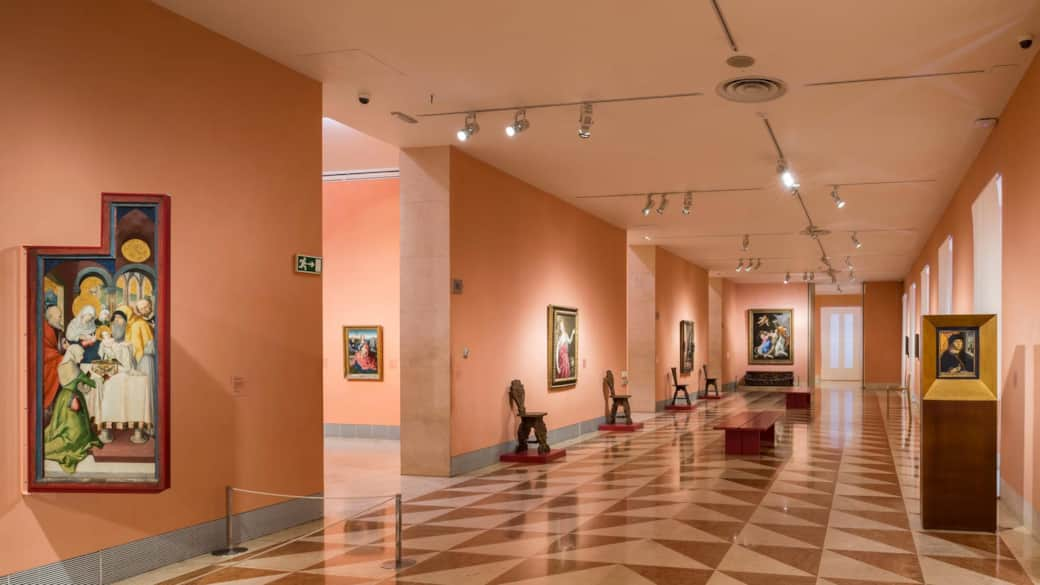
1. Museo del Prado
Spain's premier collection of Spanish and European art belongs among the elite of world art museums. Goya and Velázquez are the stars of the show in this beautiful museum that occupies pride of place along the city's grand boulevard, the Paseo del Prado. But the Prado's catalogue has such astonishing depth and breadth, from Rubens and Rembrandt to Botticelli and Bosch, that you'll require more than one visit to take it all in.

2. Plaza Mayor
Madrid is distinguished by some extraordinarily beautiful plazas, but Plaza Mayor is easily the king. The plaza's constituent elements are easy to list: uneven cobblestones, perfectly proportioned porticoes, slate spires and facades in deep ochre offset by marvellous frescoes of mythic figures and wrought-iron balconies. But this stately square is the heartbeat of a city, the scene of so many grand events in Madrid's historical story and where the modern city most agreeably throngs with life.

3. Tapas in La Latina
One of the most important gastronomic streets in Spain, La Latina's Calle de la Cava Baja is lined with tapas bars. Some have elevated these tiny morsels into art forms, while others serve up specialties in traditional clay pots. Such is Madrid's love affair with tapas and the whole culture of enjoying them that even this long and graceful thoroughfare cannot contain the neighbourhood's tapas offerings. Nearby you'll find Madrid's best tortilla de patatas (potato and onion omelette), an egg-and-jamón (ham) dish beloved by the king.

4. Parque del Buen Retiro
The alter ego to Madrid's tableau of sound and movement, the Parque del Buen Retiro is one of our favourite corners madrileños (people from Madrid) come to stroll in great numbers on weekends. As such it's one of the most accessible slices of local culture, at once filled with life and an escape from Madrid's frenetic pace.

5. Reina Sofía
In a city where world-class art galleries are everywhere, it takes something special for one painting to tower above the rest. But such is the strange and disturbing splendour of Picasso's Guernica that its claim to being Madrid's most extraordinary artwork is unrivalled. After decades of wandering the globe, it looks very much at home in the Centro de Arte Reina Sofia, alongside works by Salvador Dalí and Joan Miró.

6. Palacio Real
Built on the site where Madrid was born in the 9th century, Madrid's Palacio Real is one of the city's most significant (and most beautiful) buildings. Watching over a pretty square and shadowed by gorgeous ornamental gardens, the palace is a stately affair, combining grandeur, all the symbolism of an imperial past and unusual accessibility in the city's heart. The interior is as lavish and extravagant as you'd expect, a reminder of the glory days when Spanish royalty ruled the world.

7. Malasaña & Chueca
The legend of Madrid's hedonistic nights was born in the narrow, inner-city streets of Malasaña and Chueca. In gritty and grungy Malasaña, hard-living rock venues share punters with elegant 19th-century literary cafes. Next door in Chueca, a cool and predominantly gay clientele fill bars and nightclubs to capacity most nights. More than anywhere in the city, this is where locals come for a night out, and the diversity of what's on offer here is representative of a city whose contradictory impulses are legion.

8. Plaza Santa Ana & Night-Time Huertas
Nights around the Plaza Santa Ana and neighbouring barrio (district) of Huertas are long, loud and filled with variety. The plaza is both epicentre and starting point of so many epic Madrid nights, with outdoor tables a fabulous vantage point from which to take the pulse of the night and plan your journey through it. Within a short radius of the square, live music venues, old-style sherry bars and sleek rooftop lounge bars for sybarites will get your night going, with legendary Madrid nightclubs nearby.

9. Thyssen-Bornemisza
Of all Madrid's major art galleries, it is the Museo Thyssen-Bornemisza that most often appeals to the uninitiated. Here beneath one roof is seemingly every European painter of distinction from 13th-century religious art to zany 21st-century creations. There may just be one painting, or a handful of paintings from each artist, but the museum's broad-brush-strokes approach makes a visit here akin to a journey through all that has been refined and masterful during centuries of European art.

10. Ermita de San Antonio de la Florida
One of Madrid's best-kept secrets, the Ermita de San Antonio de la Florida is nonetheless one of the city's most significant artistic landmarks. Here in a small and otherwise nondescript hermitage in 1798, Goya, one of the city's most favoured adopted sons, painted a series of frescoes under royal orders; these extraordinary paintings remain exactly where he first painted them. Breathtaking in their vivid portrayal of Madrid life and the Miracle of St Anthony, they're definitely worth the trip across town to get here.

